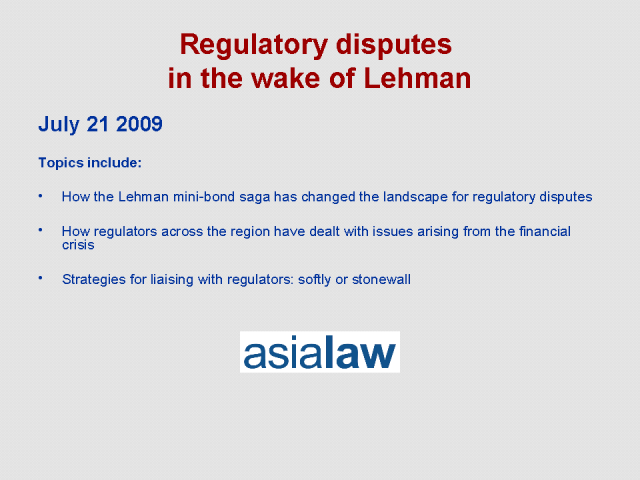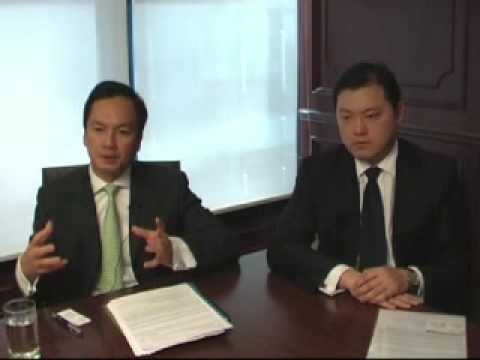Lehman Brothers Minibond saga
Post on: 16 Март, 2015 No Comment

Chia Thye Poh (b. 1941–) is a former member of parliament and political detainee. He was arrested and detained under.
The Gardens by the Bay are three public gardens with a total land area of 1,010,000 sq m in Marina Bay. Built on reclaimed.
The Lehman Brothers Minibond saga refers to events related to the unravelling of various structured investment products as a result of the companys bankruptcy filing in September 2008. Following the collapse of the American investment bank, about 10,000 retail investors in Singapore lost all or a large part of their investments totalling over S$500 million in products linked to Lehman Brothers. The financial institutions that distributed the products were accused of having mis-sold these relatively high-risk products to the investors, many of whom were the elderly and the less educated. This prompted government investigations, which eventually led to penalties being imposed on ten financial institutions and tighter regulation of the industry.
Background
The investment products in question were Minibond Notes, High Notes 5, Jubilee Series 3 LinkEarner Notes and Pinnacle Series 9 and 10 Notes. They paid the investor a regular stream of interest/coupon until maturity, at which point the investor was entitled to a redemption amount as described in the terms and conditions of the product. The coupons on these notes were much higher than fixed deposit rates, which was why they were eagerly taken up by investors. However, the investors were exposed to multiple risks and there was no guarantee that they would get back their principal when the notes were redeemed (either at or before maturity).
Description
Unwinding of the products
When news broke that Lehman Brothers had filed for bankruptcy in the United States (US) on 15 September 2008, it sent shockwaves across the world and immediately worried investors who had bought its Minibond Notes. Lehman Brothers had arranged all nine series of Minibond Notes. It was also the swap counterparty, which meant that its collapse would cause the notes to default on their scheduled interest payments. This would, in turn, lead to an early redemption of the notes and liquidation of the underlying assets.
Shortly after, investors who had bought High Notes 5 (arranged and issued by DBS Bank) and Jubilee Series 3 LinkEarner Notes (arranged by Merrill Lynch) discovered that the collapse of the former financial giant had triggered a mandatory early redemption of their notes and that they could get nothing from the forced sale of the underlying collateral, as the values of these assets had fallen drastically amid the global credit crisis. Their worst fears came true in October 2008, when it was announced that investors would receive no payout at all from the unwinding of the two products.
In November 2008, investors of Pinnacle Notes Series 9 and 10 were also told that their notes would be unwound and that they could lose almost all of their original investment. The event had been triggered by the failure or near-bankruptcy of five underlying assets, namely Lehman Brothers, US mortgage giants Freddie Mac and Fannie Mae, and Icelandic banks Kaupthing and Landsbanki. After the forced asset sell-off, it was confirmed in February 2009 that the note holders would receive zero payout.
By comparison, the experience of Minibond Notes investors was more complicated and prolonged because of the nature of Lehman Brothers role in the note structure. Their hopes were raised in October 2008 when some financial institutions expressed interest in taking over as swap counterparty, thus avoiding an early redemption. But in November 2008, this option was ruled out because of legal challenges by Lehman Brothers lawyers in the US. They were also told then that the underlying assets could not be sold for at least another two years, as the legal issues had to be cleared first. Fortunately, this happened earlier than expected and the process of liquidating the assets began in October 2009. Finally, in February 2010, they received their share of the proceeds, with payouts ranging from 21.5% to 70.8% of the amount invested.
Investor activism and compensation
Soon after investors found out that they could lose their entire capital, the local media began carrying stories about the plight of those who claimed they had been misled into buying the products. Similar stories also began appearing in internet forums and blogs. The unhappiness stemmed from the way these products had been marketed and sold as safe investments when in fact they were not. A large number of the investors were elderly folk and less-educated individuals who were not proficient in English or had little financial knowledge and thus would have found it difficult to fully understand the risks of these complex structured investments. Questions were raised as to why the products had been offered to these investors in the first place. Even those who were better educated cried foul at the way the products had been misrepresented. People felt cheated and grew increasingly angry at the institutions that sold them the products; some even blamed the government. Adding to the debacle was news that eight town councils run by the ruling Peoples Action Party had S$16 million invested in the various Lehman Brothers-linked products.
Thousands of complaints were sent to the ten financial institutions that distributed the notes: DBS Bank, ABN Amro (now called Royal Bank of Scotland), Maybank, Hong Leong Finance, CIMB-GK Securities, DMG and Partners Securities, Kim Eng Securities, OCBC Securities, Phillip Securities and UOB Kay Hian. Some who were dissatisfied with the response they got took their cases to the Financial Industry Disputes Resolution Centre. The fallout from Lehman Brothers collapse also led to a level of social activism rarely seen in Singapore many investors petitioned to the Monetary Authority of Singapore (MAS), initiated collective legal action against the distributors and/or joined public protest rallies. The first lawsuit arising from the minibond saga was by a group of 204 investors who sued DBS Bank in July 2009 for the S$17 million they lost from investing in High Notes 5, as they were unhappy with the banks low settlement offers.
As of 31 May 2009, DBS Bank, ABN Amro, Maybank and Hong Leong Finance received 5,551 complaints. Of the 5,352 cases decided on, 67% or 3,607 cases received settlement offers, 85% of which were accepted by the investors. The compensation offered totalled S$104.6 million or 32% of the amount invested in the cases decided. The six brokerages, which received 952 complaints, offered compensation in 33% of the 889 cases decided. The offers, 70% of which were accepted, totalled S$2.74 million or just 5.6% of the amount invested in the cases decided. All settlements were offered without admission of liability.
Government response
While reminding investors that they were ultimately responsible for their own financial choices and should make the effort to understand what they were investing in, the MAS took an active role in helping those affected. Besides telling the distributors to handle all complaints fairly and give priority to vulnerable investors such as retirees with little education, the MAS ordered them to appoint independent parties to oversee their complaints handling processes and mis-selling investigations. It also drew up a timeline that they had to follow in the handling of customers complaints this required them to complete their review of each complaint within six weeks of receiving it.
In addition, it looked into the sales practices of the ten distributors and its findings led to sales bans being imposed on them starting from 1 July 2009. Hong Leong Finance received the heaviest penalty, a two-year ban. DBS Bank, ABN Amro and Maybank were given six-month bans, and the six brokerages were handed bans of six months or one year. These institutions could not resume selling structured notes until their internal processes had been strengthened to MASs satisfaction. Distributors typically received a commission of between 2% and 3% from the sale of structured products. Hong Leong Finance has since said that it would not sell such products in future. The bans on the three banks were lifted with effect from 12 February 2010, while the six brokerages had theirs lifted with effect from 24 August 2010.
The MAS has also reviewed the regulatory framework and proposed several enhancements to better safeguard the interests of retail investors. For example, it has proposed a user-friendly product highlights sheet that describes the key features and risks of an investment product, as well as a seven-day cooling off period during which investors can cancel their investment without incurring sales charges or commissions. Other proposals include measures to raise the competency of individuals selling complex investment products. The MAS sought public feedback in early 2009 and early 2010 and will consider all responses before implementing its proposals, many of which require legislative amendments. In the meantime, it has published a consumer guide titled Making Sense of Structured Products to help investors make more informed decisions regarding such products.
Valerie Chew
Chan, F. (2008, September 18). DBS High Notes investors at risk. The Straits Times. Retrieved from Factiva.
Chan, F. (2008, September 25). Minibond investors turn to MAS. The Straits Times. Retrieved from Factiva.
Chan, F. (2008, November 15). Bad news for Pinnacle buyers. The Straits Times. Retrieved from Factiva.
Chan, F. (2009, September 11). Minibond investors begin legal action. The Straits Times. Retrieved from Factiva.
Chan, F. (2009, October 2). Minibond investors to get some money back. The Straits Times. Retrieved from Factiva.
Chan, F. (2010, February 12). MAS lifts ban on three banks. The Straits Times. Retrieved from Factiva.
Chen, G. & Chan, F. (2008, October 11). MAS: 10,000 here invested $501m. The Straits Times. Retrieved from Factiva.
Cua, G. (2008, October 3). MAS to review structured products rules. The Business Times. Retrieved from NewspaperSG.
Cua, G. (2010, February 4). Minibond: 80% to recoup half or more of principal. The Business Times. Retrieved from Factiva.
Goh, C. L. (2008, November 18). Town councils exposure: $16m. The Straits Times. Retrieved from Factiva.
Less sophisticated structured products expected in future. (2010, August 25). Channel NewsAsia. Retrieved from Factiva.
Low, I. & Chan, F. (2008, October 18). MAS to banks: Do the right thing. The Straits Times. Retrieved from Factiva.
www.mas.gov.sg/news_room/press_releases/2008/MAS_Sets_Out_Resolution_Process_and_Timeline_for_Investors_of_Structured_Products.html
www.mas.gov.sg/news_room/press_releases/2009/MAS_Releases_Investigation_Findings_on_the_Sale_and_Marketing_of_Structured_Notes_Linked_to_Lehman_Brothers.html
www.mas.gov.sg/resource/publications/consult_papers/2009/Response%20to%20FB%20Received%20Phase1.pdf

www.mas.gov.sg/resource/publications/consult_papers/2010/Response%20to%20Feedback%20Received%20-%20Phase2.pdf
Siow, L. S. (2008, September 17). Investors fret over Lehmans Minibonds. The Business Times. Retrieved from NewspaperSG.
Siow, L. S. (2008, September 18). All Weather boost, Minibond dampener. The Business Times. Retrieved from NewspaperSG.
Siow, L. S. (2008, September 25). MAS cracks whip to get fair deal for investors. The Business Times. Retrieved from NewspaperSG.
Siow, L. S. (2008, October 10). Investors of Merrill notes to get back nothing. The Business Times. Retrieved from Factiva.
Siow, L. S. (2008, October 23). Hope flickers for victims of Lehman-linked notes. The Business Times. Retrieved from NewspaperSG.
Siow, L. S. (2008, October 29). Zero payout for most High Notes 5 investors. The Business Times. Retrieved from NewspaperSG.
Siow, L. S. (2008, December 3). Restructuring of Minibonds on hold. The Business Times. Retrieved from NewspaperSG..
Tan, K. (2008, September 29). Personal wealth: Messy end to structured products. The Edge Singapore . Retrieved from Factiva.
Toh, M. (2008, October 12). Over 500 investors at protest rally. The Straits Times. Retrieved from Factiva.
Further readings
McDonald, L. G. & Robinson, P. (c2009). A colossal failure of common sense: The inside story of the collapse of Lehman Brothers . New York: Crown Business.
(Call no. RBUS 332.620973 MAC)
www.moneysense.gov.sg/publications/guides_publications/structured_notes.html
www.mas.gov.sg/resource/publications/consult_papers/2010/Regulatory%20Regime%20for%20Listed%20and%20Unlisted%20Investment%20Products.pdf
Tan, L. (2008, September 26). Truly, buyer beware. The Straits Times. Retrieved from Factiva.
Tan, L. (2008, October 31). Risks listed in bold, but. The Straits Times. Retrieved from Factiva.
The information in this article is valid as at 2010 and correct as far as we are able to ascertain from our sources. It is not intended to be an exhaustive or complete history of the subject. Please contact the Library for further reading materials on the topic.














